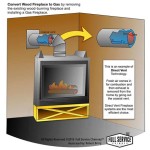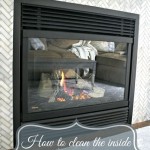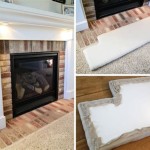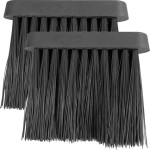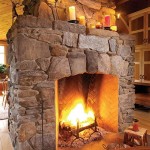Fireplace Safety in the Bedroom: A Comprehensive Guide
The allure of a fireplace in the bedroom is undeniable. It evokes a sense of warmth, comfort, and romantic ambiance, providing a focal point that transforms the space into a cozy haven. However, the presence of an open flame within the confines of a sleeping area demands a heightened awareness of safety protocols to mitigate potential risks. Fireplace safety in the bedroom requires careful planning, regular maintenance, and adherence to established safety guidelines to ensure the well-being of occupants and the security of the dwelling. This article provides a comprehensive overview of the critical safety considerations associated with bedroom fireplaces, encompassing installation requirements, operational best practices, and essential maintenance procedures.
The inclusion of a fireplace, whether wood-burning, gas, or electric, introduces potential hazards that necessitate careful management. Wood-burning fireplaces present risks related to creosote buildup, chimney fires, and the potential for embers to escape the firebox. Gas fireplaces, while offering convenience, require meticulous monitoring for gas leaks and proper ventilation to prevent carbon monoxide poisoning. Electric fireplaces, while generally safer, still pose electrical hazards if not properly installed and maintained. Therefore, a thorough understanding of the specific risks associated with each type of fireplace is paramount to establishing a safe bedroom environment.
Key Considerations Before Installation
Prior to installing a fireplace in a bedroom, a comprehensive assessment of the room's structure, ventilation, and existing safety features is crucial. This assessment should involve a qualified professional who can evaluate the structural integrity of the floor and walls to ensure they can support the weight of the fireplace and chimney system. Furthermore, the professional can determine the adequacy of the room's ventilation to accommodate the combustion process, particularly for wood-burning and gas fireplaces.
Code compliance is a non-negotiable aspect of bedroom fireplace installation. Local building codes outline specific requirements for fireplace placement, chimney construction, clearances to combustible materials, and the presence of essential safety devices such as smoke detectors and carbon monoxide detectors. Failure to adhere to these codes can result in significant safety hazards and potential legal repercussions. A qualified contractor experienced in fireplace installation is essential to ensure full compliance with all applicable regulations.
Choosing the appropriate type of fireplace is also a critical decision. Wood-burning fireplaces, while aesthetically appealing, require a substantial investment in chimney construction and regular maintenance to prevent creosote buildup and chimney fires. Gas fireplaces offer greater convenience and cleaner burning but necessitate professional installation to ensure proper gas line connections and ventilation. Electric fireplaces provide a relatively safe and convenient option, as they do not produce actual flames or require venting, but they should be installed according to the manufacturer's instructions and connected to a properly grounded electrical outlet.
Selecting a fireplace with appropriate safety features is also paramount. Look for models that incorporate features such as a spark screen or glass door to prevent embers from escaping the firebox, a built-in carbon monoxide detector for gas fireplaces, and automatic shut-off mechanisms for electric fireplaces. These features provide an added layer of protection against potential hazards and enhance the overall safety of the bedroom environment.
Safe Operation of a Bedroom Fireplace
Once a fireplace is installed, adhering to safe operational practices is essential to minimize the risk of fire or carbon monoxide poisoning. For wood-burning fireplaces, only seasoned hardwoods should be used as fuel. Softwoods, such as pine, tend to produce more creosote, which can accumulate in the chimney and increase the risk of a chimney fire. Never burn trash, paper, or other combustible materials in the fireplace, as these can release harmful toxins and create excessive smoke.
Maintaining a manageable fire size is crucial to prevent overheating and the potential for embers to escape the firebox. Overloading the fireplace with fuel can create an uncontrolled fire that is difficult to manage and poses a significant safety hazard. It is also important to never leave a fire unattended, especially while sleeping or leaving the house. A responsible adult should always be present to monitor the fire and ensure that it remains contained within the firebox.
Ensuring adequate ventilation is paramount when operating a wood-burning or gas fireplace. Open a window slightly to provide fresh air and prevent the buildup of carbon monoxide. Regularly check the operation of the chimney damper to ensure that it is functioning properly and allowing for proper exhaust flow. Never block or obstruct the chimney flue, as this can cause dangerous gases to back up into the room.
For gas fireplaces, it is essential to be vigilant for signs of gas leaks. A distinct sulfur or rotten egg smell is a common indicator of a gas leak. If a gas leak is suspected, immediately evacuate the premises and contact the gas company or fire department from a safe location. Never attempt to repair a gas leak yourself, as this can be extremely dangerous.
Electric fireplaces, while generally safer, should still be operated with caution. Never overload the electrical circuit by plugging other appliances into the same outlet. Inspect the power cord regularly for signs of damage, such as fraying or cracking. If the power cord is damaged, discontinue use of the fireplace and have it repaired by a qualified electrician.
Essential Maintenance Procedures
Regular maintenance is paramount to ensuring the safe and efficient operation of a bedroom fireplace. For wood-burning fireplaces, the chimney should be inspected and cleaned annually by a qualified chimney sweep. This process removes creosote buildup, which is a highly flammable substance that can ignite and cause a chimney fire. The chimney sweep should also inspect the chimney for any cracks, damage, or obstructions that could compromise its structural integrity.
The firebox should also be inspected regularly for cracks or damage. Small cracks can be repaired with fire-resistant mortar, but larger cracks may require more extensive repairs. The spark screen or glass door should be cleaned regularly to remove soot and debris, which can obstruct the view of the fire and reduce its effectiveness. The area around the fireplace should be kept clear of combustible materials, such as curtains, rugs, and furniture.
For gas fireplaces, the gas line should be inspected annually by a qualified technician to ensure that it is free of leaks and corrosion. The burner should also be cleaned regularly to remove debris and ensure proper combustion. The pilot light should be checked periodically to ensure that it is functioning properly and igniting the burner efficiently.
Electric fireplaces require minimal maintenance, but the unit should be cleaned regularly to remove dust and debris. The heating element should be inspected periodically for signs of damage. The unit should be unplugged during cleaning and when not in use to prevent electrical hazards.
Regardless of the type of fireplace, smoke detectors and carbon monoxide detectors should be installed in the bedroom and tested regularly. These devices provide an early warning of fire or carbon monoxide poisoning, allowing occupants to evacuate the premises safely. Batteries should be replaced at least twice a year, and the detectors should be replaced every five to ten years, as recommended by the manufacturer.
By adhering to these safety guidelines, individuals can enjoy the warmth and ambiance of a bedroom fireplace while minimizing the risk of fire or carbon monoxide poisoning. A proactive approach to fireplace safety, encompassing proper installation, responsible operation, and diligent maintenance, is essential to creating a secure and comfortable bedroom environment.

Gas Fireplace Safety 9 Essential Questions Answered We Love Fire

Restoring A Bedroom Fireplace

8 Tips For Fireplace Safety Your Home Magikflame

Bedroom Fire Safety Tips Puroclean Hq

Fireplace Safety SÓlas Contemporary Fireplaces

Safety Hpbac

Electric Wood Stove Segmart 14 Fireplace W 3d Flame Portable Heater Overheating Safety For Bedroom Living Room Office 1400w Black H199 Com

Electric Fireplace Heater 1500w Portable Space W Realistic 3d Grillpartsreplacement Bbq Parts Retailer

Syngar 1400w Electric Fireplace Heater Small Space Stove For Office Bedroom Indoor Use Portable With Adjustable Temper Overheating Safety System Black Com
:max_bytes(150000):strip_icc()/KKContemporaryRanchPCRogeWade-151ef6eba88140889795cc4ff000d929.jpeg?strip=all)
55 Bedroom Fireplace Ideas To Light Up Your Life

